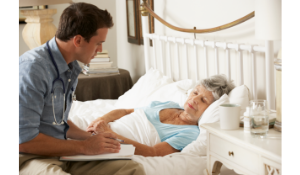 Somewhere along the line America's pop culture began to malign millennials. They became known as the narcissistic generation that would rather play video games than outdoor sports; craved YouTube fame; wanted only to be tech entrepreneurs; decorated with laptops and futons; were summed up as lazy and self-centered.
Somewhere along the line America's pop culture began to malign millennials. They became known as the narcissistic generation that would rather play video games than outdoor sports; craved YouTube fame; wanted only to be tech entrepreneurs; decorated with laptops and futons; were summed up as lazy and self-centered.
Not So Fast
According to the Center for Disease Control and Prevention (CDC), nearly 80% of individuals with Alzheimer’s disease and related dementias are receiving in-home care. Given the aging population, this statistic may not be all that surprising. However, what is surprising is that these caregiving roles are increasingly being assumed by members of the millennial generation. Despite the responsibilities, challenges, and nuances of caregiving, a recent study found that 91% of millennials in the United States say caregiving is rewarding.
Millennial Caregivers
- According to a recent AARP study, 23% of caregiving adults are millennials who are caring for a parent or grandparent with a long-term physical condition in a "moderate-to high-intensity care situation" for an average of 25 hours a week.
- A 2019 national poll found that one-third of millennials expect to provide care for an aging family member or friend within the next five years.
- These “invisible caregivers” are an increasingly important part of the US’s caregiver force. According to a 2018 AARP report, an estimated 10 million millennials care for an aging loved one — about one in four family caregivers.
- Millennials are becoming the new wave of geriatric social workers, geriatricians, and neurologists. They are equipped to advocate for stronger social programs to support the exploding aging population and push for medical innovation to slow down the progression of dementia.
- The youthful profile of millennial caregivers:
- 35% are between 18 and 24
- 34% are between 30 and 34
- 31% are between 25 and 29
- Although women still make up most unpaid caregivers, millennials account for the growing number of male caregivers in the US. Men account for a whopping 47% of millennial caregivers — 10% higher than any other generation.
- Millennial caregivers are more likely to be enrolled in school and less likely to have the same support systems available to older generations of caregivers. Almost ¾ of younger caregivers work with 53% employed full time. This group also spends about 21 hours every week caring for their loved ones, while over one in four spends more than 20 hours. About one in five assists with a loved one’s care 40 hours or more a week.
- Millennial caregivers have a diverse range of backgrounds and experiences, and over half are people of color. Demographics data from 2015 found that among millennial caregivers:
- 27% were Hispanic
- 18% were black
- 8% were Asian American/Pacific Islanders
Take That Back
It is time for us to give millennials a break. Data from the CDC and AARP sharply correct our popular stereotypes and elevate millennials to their proper position in our esteem. As the data testifies: These “invisible caregivers” are an increasingly important part of the US’s caregiver force."
You can read more about issues/solutions for Elderly/Aging Long Term Care on our blog. Enjoy our content? Then please subscribe for instant, weekly or monthly updates!

